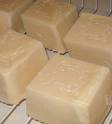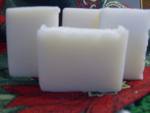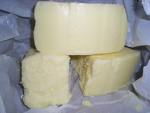Getting started: 8 soap making supplies you need to work with tallow
So, you have decided to try your hand at soap making. If you are a first-timer, you are sure to fumble and get messy with the process. Don’t worry, that is the case with all soap makers in the beginning. You will learn as you practice and will better your previous soap making episodes in course of time. Once you have an inclination to make soaps on your own, you need to research and study about the various processes available – cold pressing method, basic soap making method, old-time soap making (with ashes and fat) etc. When you complete the research process, you will gather the following:
1.You need basic ingredients like tallow, lye, water and salt to make soap
2.You need equipments like quart, steel pot, wooden blender etc. to work with soap
3.You need a phenomenal amount of perseverance to learn/unlearn through the process
4.You can perfect your soap only by practice and the first time is always the experiment-time

Soap making ingredients: Beef tallow, compared to any other animal fat or vegetable oil, makes great soaps. You get creamy soaps with rich lather and good cleansing abilities. Since tallow is also available at cheap rates, you can get the suet (raw beef fat) from your butcher and then render it into tallow from the convenience of your home. Rendering tallow simply means removing the impurities through melting the fat. Other than tallow, you would need lye crystals (liquid potash or sodium hydroxide) and gallons of water. If you want to color or add perfume to your soap, buy essentials oils and other necessary ingredients too.
Soap making supplies/equipment: Once you get your ingredients right, you need to start buying/collecting your soap making supplies. Below is a list of the basic supplies you may need for your soapy adventure:
1. Soap making scale: This is one of the expensive things you may have to purchase. But you cannot do without this as you need to measure your lye, water and also your tallow. Ensure that the equipment is accurate to the nearest gram or 1/10th of an ounce.
2. Stainless steel pot: In ancient times, people used wooden pots. But nowadays, a stainless steel variant is preferred. Since it can sustain heat, it can be used for boiling the lye mixture and the tallow. You need to be stirring your soap mixture till you see trace formation. So, see to it that your pot is quite stable and big enough to hold the amount of soap you plan to make.
3. Quart pans, plastic containers: You cannot mix lye with water in metal containers. The lye mixture will be extraordinarily hot and the metal will only make it hotter. To avoid trouble, hold lye and water separately in plastic containers or quart plastic juice jugs. Two mid-sized plastic mixing containers will save you a lot of trouble.
4. Candy thermometers: Better to have two, one for lye and another for measuring soap mixture/fat.
5. Safety equipment: Never touch lye without having your safety gear on. Get ready with a pair of rubber gloves, goggles, apron, long sleeved-clothes and other equipment (if required) to ensure safe working with lye. Lye can be extremely harmful on skin and even floors, walls etc. So, avoid spilling and keep out of reach of children.
6. Sharp knife or soap cutter: Once your soap is formed, you need to cut it into bars for usage. Get yourself a thin, sharp knife. A kitchen equipment would do, but in course of time, you will learn that like all other equipment, your knife makes floppy/messy ends. So, get a good soap cutter if you want to perfect your presentation.
7. Soap molds: You cannot do without this if you want to make bar soaps for toilet use. Don’t think wooden soap molds are the only things to be used. You can try anything as long as it does not leak or have any chemical reaction with soap.
8. Wooden or plastic blenders: For stirring both the lye solution and the soap mixture, you need blenders. Only stirring stop the lye from sedimentation and induce the saponification process, so get yourself some wooden or plastic blenders, large spoons, spatulas etc.








